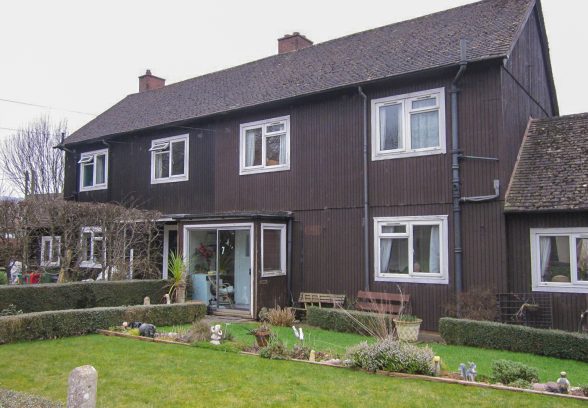This website uses cookies
This website uses cookies to enable it to function properly and to analyse how the website is used. Please click 'Close' to accept and continue using the website.



We are objecting to plans to externally clad around 20 prefabricated wooden “Swedish Houses” in Stroud with a silicone insulated render which would completely change their very distinctive and attractive external appearance.
Two pairs of semi detached “Swedish House” bungalows in Cottered, Hertfordshire, are also under threat of demolition and redevelopment. The Society will be lodging an objection with the council.
Swedish prefabricated houses were a response to the housing shortage in the UK following the Second World War.
Elain Harwood, historian at Historic England, recounts in her book Space, Hope and Brutalism: “Built of short waste lengths of tongue-and-groove boarding, they were quickly erected in rural areas and had excellent insulation standards, although redesigned by British government architects, the plank construction was distinctively Scandinavian. Local authorities provided sites and services, from 1945 using prisoner of war labour, but although 10,000 houses were promised, only 2,444 were erected because of restrictions on dollar imports imposed in 1947 that limited softwood supplies until November 1953.”
So far only two of these Swedish Houses, both bungalows, have been listed in recognition of their architectural and historical importance.
Conservation Adviser Tess Pinto said ‘These applications have drawn our attention to a building type that has largely been overlooked. Despite the efforts of the Prefab Museum in compiling a list, it is still unknown how many survive close to their original condition. The few that do are very vulnerable. We are urging Historic England to undertake a wider assessment of Swedish Houses across the country – otherwise, we are at risk of losing a fascinating part of our post-war heritage.

Become a C20 member today and help save our modern design heritage.